Top 8 Most-Visited Cosmetics eCommerce Websites in Singapore








The cosmetics eCommerce industry in Singapore is witnessing explosive growth and continuous innovation, becoming one of the most promising and dynamic markets in the Southeast Asia region. With the increasing demand for beauty and personal care products from consumers, coupled with support from advanced technology and digital infrastructure, online cosmetics businesses in Singapore have been seizing opportunities to expand market share and enhance customer experiences.
Below are cosmetics 8 eCommerce websites trusted by Singaporean consumers for shopping.
1. Watsons Singapore

The cosmetics and healthcare retail chain Watsons has gained fame across Asia, and Singapore is no exception. As a member of the A.S. Watson Group, Watsons has solidified its position with thousands of stores worldwide and a robust eCommerce website.
Watsons Singapore is renowned for its extensive product portfolio, ranging from cosmetics and skincare to haircare and healthcare products. The eCommerce website of Watsons Singapore is built on the SAP Commerce Cloud platform, providing customers with a smooth and diverse shopping experience. Search, product filtering, and cart features are optimized and customized, while encouraging customers to create accounts to enjoy exclusive benefits. This helps track and measure customer behavior on the website, leading to the most effective sales and marketing strategies.
- Website: watsons.com.sg
- Platform: SAP Commerce Cloud
- Traffic: 1.852M/month
- Ranking: #322 (Singapore) & #69,750 (Global)
2. Guardian Singapore

Guardian is a retail chain specializing in healthcare, cosmetics, and other consumer products. Guardian has a presence in many countries and regions worldwide, including Singapore, offering a range of products from renowned and reliable brands.
The eCommerce website of Guardian is built on the SAP Commerce Cloud platform, providing many useful features for users. Customers can easily search for and purchase products, manage their shopping carts, and make convenient payments. Additionally, the website offers promotions and online support services to help customers have a comfortable and secure online shopping experience. Furthermore, customers can also review and provide feedback on products, providing useful information for other users.
- Website: https://guardian.com.sg/
- Platform: SAP Commerce Cloud
- Traffic: 1.349M/month
- Ranking: #676 (Singapore) & #126,366 (Global)
3. Sephora Singapore
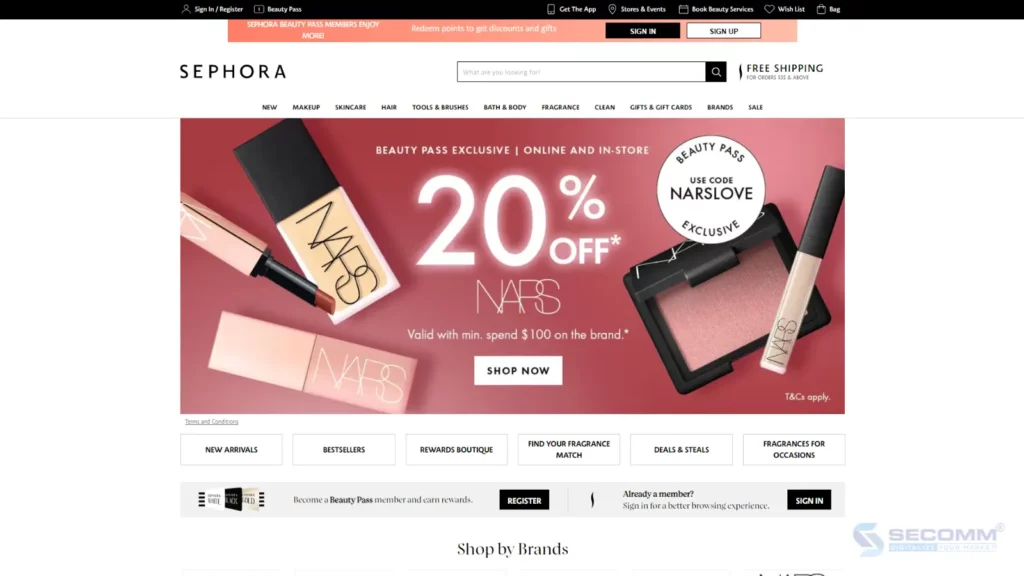
Similar to Guardian, Sephora is a global retail chain specializing in cosmetics and beauty, known for offering a variety of beauty products from leading brands worldwide. Currently, Sephora has a presence in the Singapore market with physical stores in major shopping centers and an eCommerce system, including a website and app for customers. Sephora is loved for its product diversity, customer care services, and innovation in the online cosmetics shopping experience.
Sephora’s eCommerce system in Singapore is built on Vue.js and Nuxt.js programming languages. With this system, Sephora’s customers can quickly search for and explore products through smart search bars and diverse filters. The online shopping experience is optimized with detailed product information, crisp images, and customer reviews.
The Sephora app is also highly regarded, making shopping easier for customers with features like “Virtual Artist” and receiving notifications about promotions. Overall, Sephora provides a range of features and services to meet customers’ cosmetics shopping needs, creating a professional and convenient online shopping experience.
- Website: https://www.sephora.sg/
- Programming language: Vue.js, Nuxt.js
- Traffic: 1.287M/month
- Ranking: #605 (Singapore) & #93,279 (Global)
4. Venus Beauty
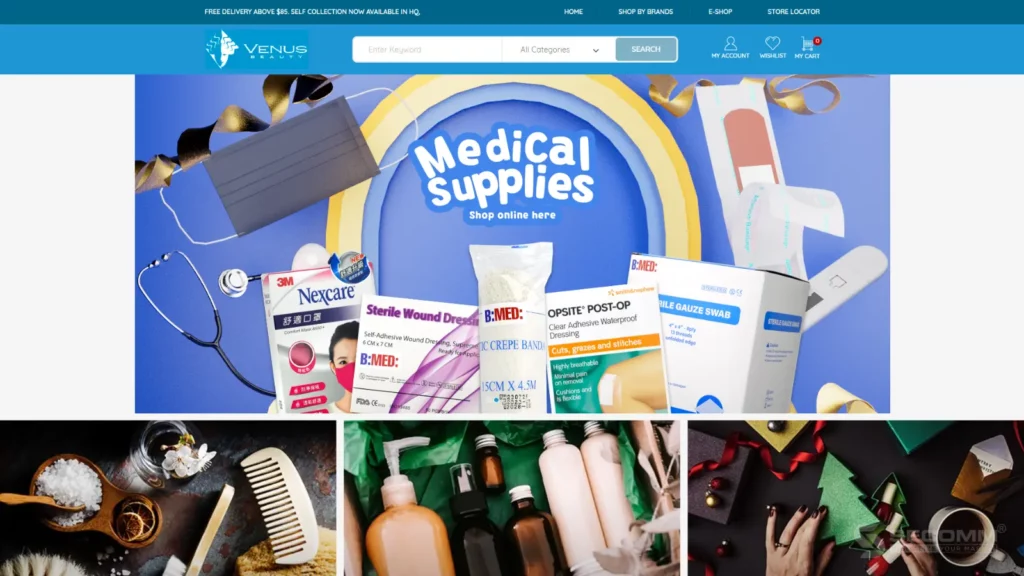
Venus Beauty is one of the retail chains for cosmetics and personal care present in most shopping centers across Singapore, beloved for its product diversity and quality. Since its establishment in 2002, Venus Beauty has continuously grown and expanded, becoming a familiar destination for many local consumers.
The eCommerce website of Venus Beauty is built and developed on the Magento platform, with superior customization and scalability. Customers can easily search for and purchase products thanks to the intuitive and user-friendly website interface. Venus Beauty also regularly offers attractive promotional programs to attract customers to shop more on the website and app.
- Website: venusbeauty.com.sg
- Platform: Magento Open Source
- Traffic: 325,090/month
- Ranking: #2,211 (Singapore) & #321,368 (Global)
5. LanCôme Singapore

Lancôme Singapore is the branch of the renowned cosmetics brand Lancôme, part of the globally famous L’Oréal Group. Lancôme is known for its high-quality skincare products, makeup, and fragrances, always endorsed by beauty experts and celebrities. In Singapore, Lancôme not only offers premium products suitable for various skin types but also provides optimal online shopping experiences for customers.
The Lancôme website is developed on the Salesforce Commerce Cloud infrastructure with a user-friendly interface, allowing customers to browse, search, view products, and make purchases easily and quickly. The website also integrates AR technology to provide a “Virtual Try-On” experience, allowing customers to try on lipsticks, eyeshadows, and other products realistically before making purchasing decisions.
- Website: lancome.com.sg
- Platform: Salesforce Commerce Cloud
- Traffic: 170,443/month
- Ranking: #7,671 (Singapore) & #1,007,547 (Global)
6. Cocomo Singapore

Cocomo is an eCommerce website specializing in beauty and personal care products from Korean brands. Cocomo boasts a rich product portfolio, including cosmetics, skincare products, haircare, and various other beauty items, catering to all customer beauty needs.
The Shopify website of Cocomo Singapore is designed with a clear, intuitive interface, making it easy for users to search for and select products. Product categories are organized logically, along with efficient search tools, making shopping quick and convenient. Cocomo frequently offers promotions, discounts, and special deals, helping customers save money. These promotional offers are regularly updated and can be easily found on the homepage or product category pages.
- Website: https://www.cocomo.sg/
- Platform: Shopify
- Traffic: 138,532/month
- Ranking: #13,831 (Singapore) & #1,356,641 (Global)
7. Paula’s Choice
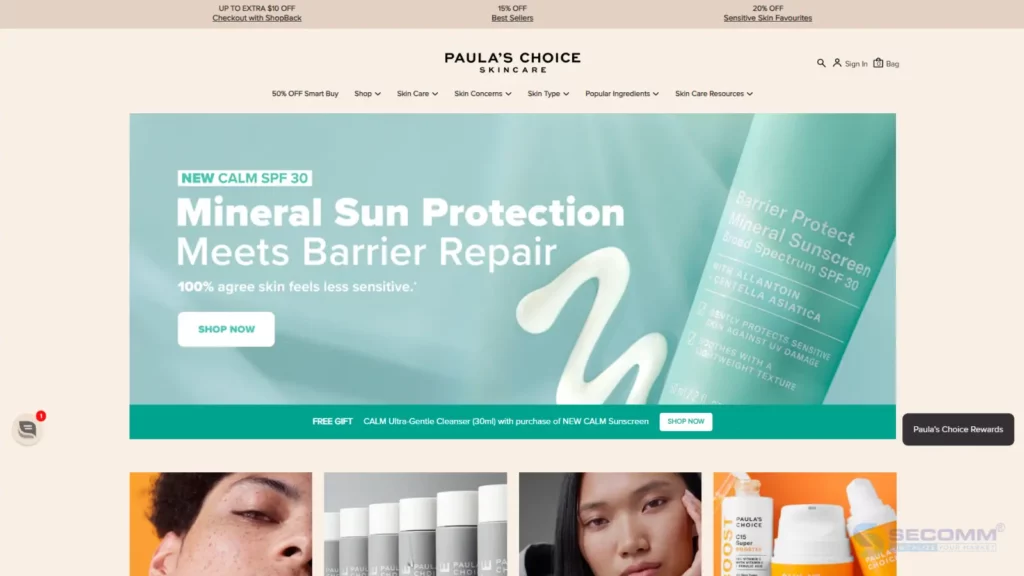
In Singapore, the skincare brand Paula’s Choice is just as renowned as in other markets. Founded by skincare expert Paula Begoun, the brand is famous for its science-backed skincare products, known to be safe and effective, free from harmful ingredients like fragrances or dyes.
Paula’s Choice eCommerce website is built on Shopify Plus. The website offers a range of skincare products, including cleansers, toners, serums, moisturizers, sunscreens, and specialized treatments like BHA, AHA, and retinol. These products cater to all skin types, from oily, dry, sensitive, acne-prone to aging skin. Each product on the website comes with detailed descriptions of ingredients, usage instructions, benefits, and supporting scientific research.
Paula’s Choice Singapore regularly runs discount programs, bundled gifts, and special offers for customers. Additionally, customers can easily access support from the customer service team via hotline, email, or live chat.
- Website: https://paulaschoice.sg/
- Platform: Shopify Plus
- Traffic: 132,171/month
- Ranking: #7,064 (Singapore) & #839,402 (Global)
8. Hush Singapore

Hush is a familiar destination for Singaporean consumers when they need to shop for cosmetics online. This retail giant specializes in providing beauty and personal care products from various leading brands worldwide such as Laneige, Aveeno, Bioderma, CeraVe, and more.
The Hush website is designed to be simple, modern, and user-friendly. Customers can easily search and browse through products thanks to clear categories and efficient search tools. Additionally, customers can make payments by registering an account or as a guest. Hush also offers fast and free delivery services, allowing customers to track their orders and estimated delivery times.
- Website: https://hush.sg/
- Programming language: Ruby
- Traffic: 77,937/month
- Ranking: #10,733 (Singapore) & #1,548,638 (Global)
Lời kết
In summary, the cosmetics eCommerce industry in Singapore has seen significant growth over the years with the presence of many reputable and well-known names. From international brands like Watsons, Lancôme, and Paula’s Choice to local eCommerce platforms like Cocomo and Hush, consumers have countless options to search for and purchase high-quality beauty and personal care products. Each website offers unique and convenient shopping experiences, catering to the increasingly diverse needs of customers.
Hopefully, the list above will help motivate many other beauty businesses to confidently build their own eCommerce websites.
Need more in-depth advice? Contact SECOMM today!







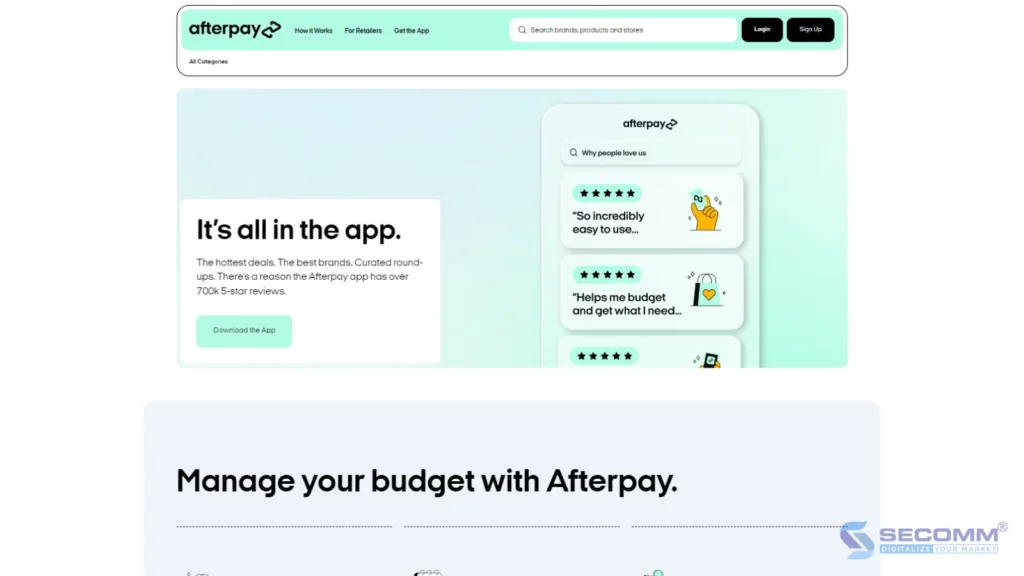


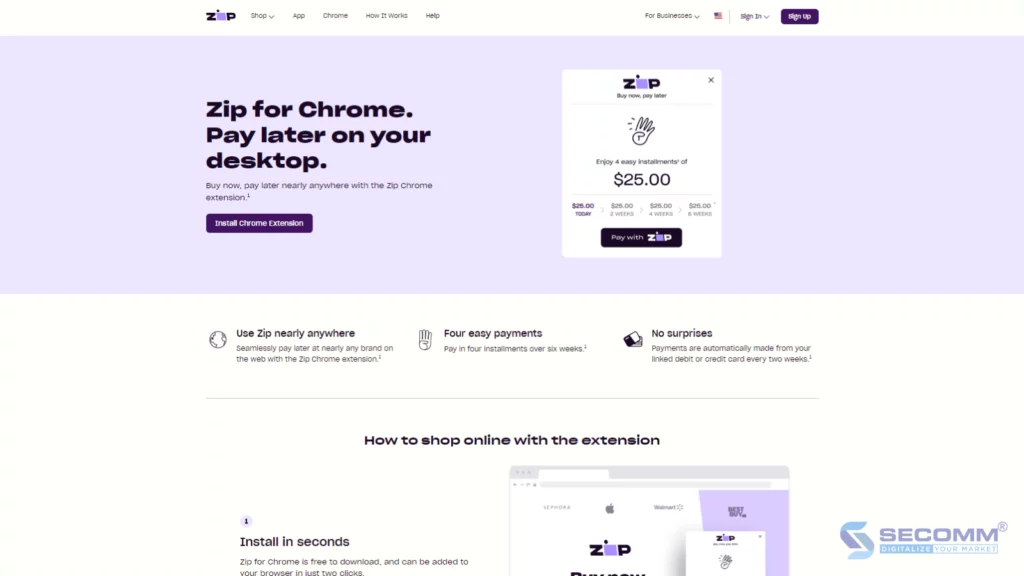
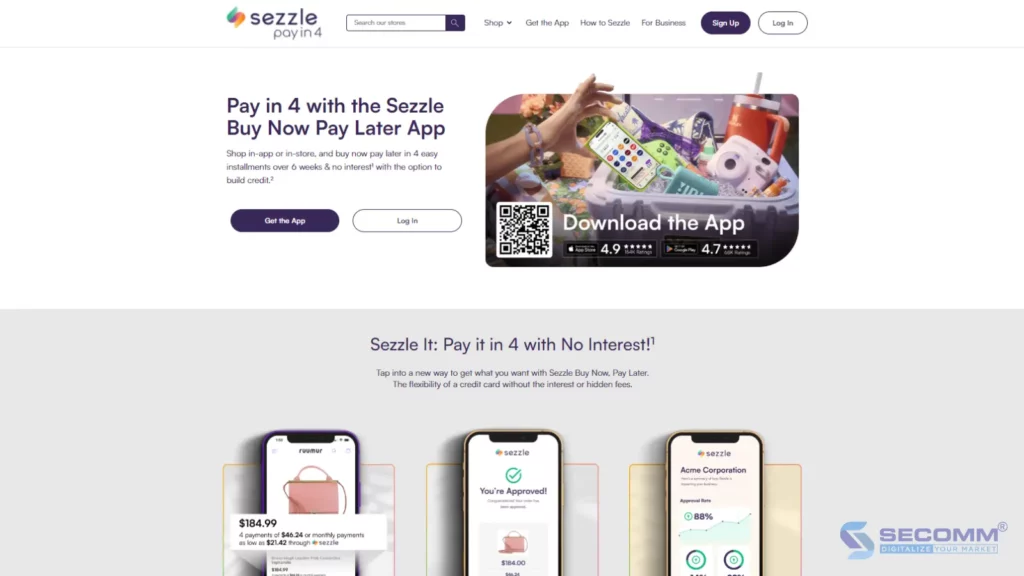
























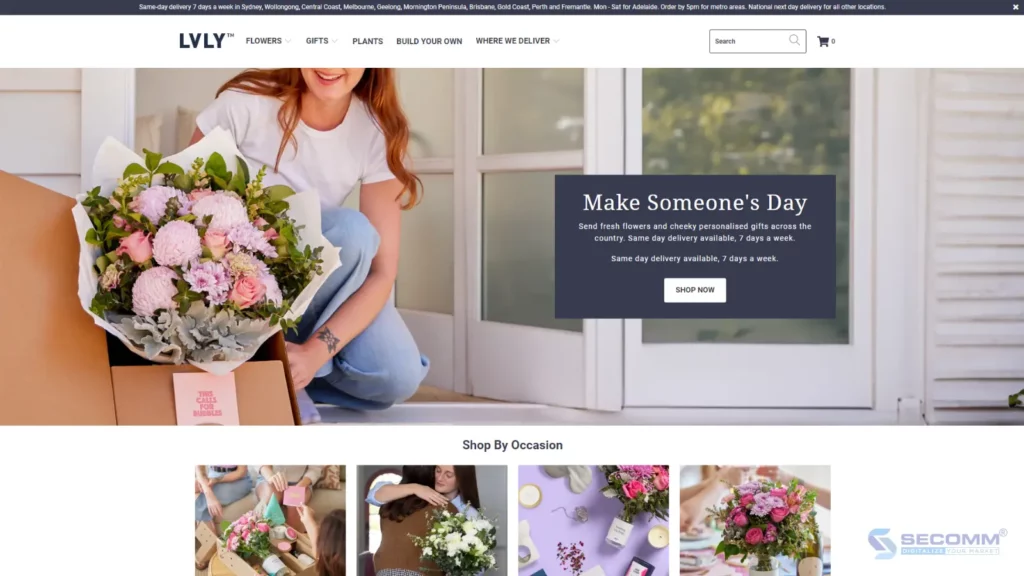





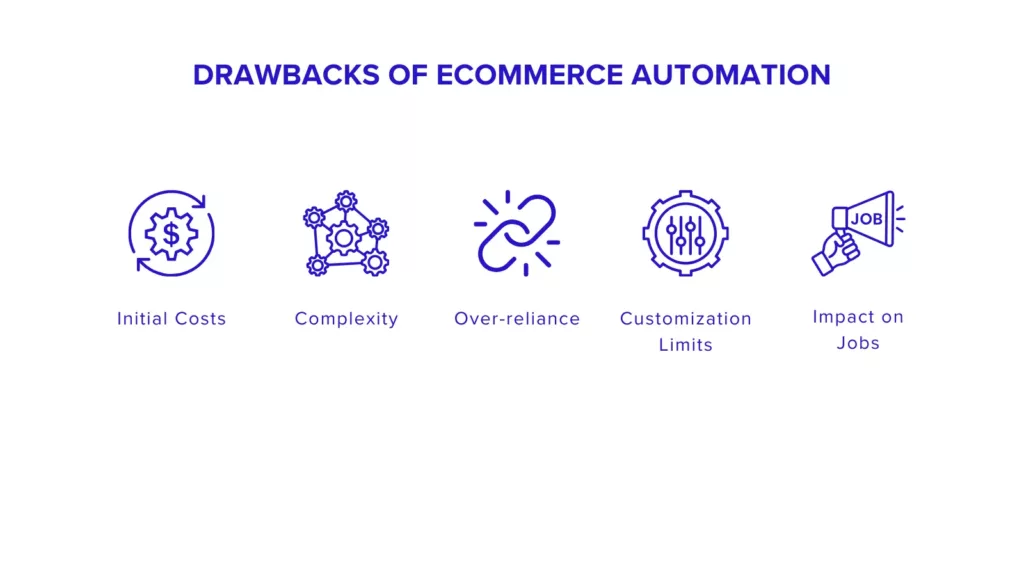





















































Comment (0)